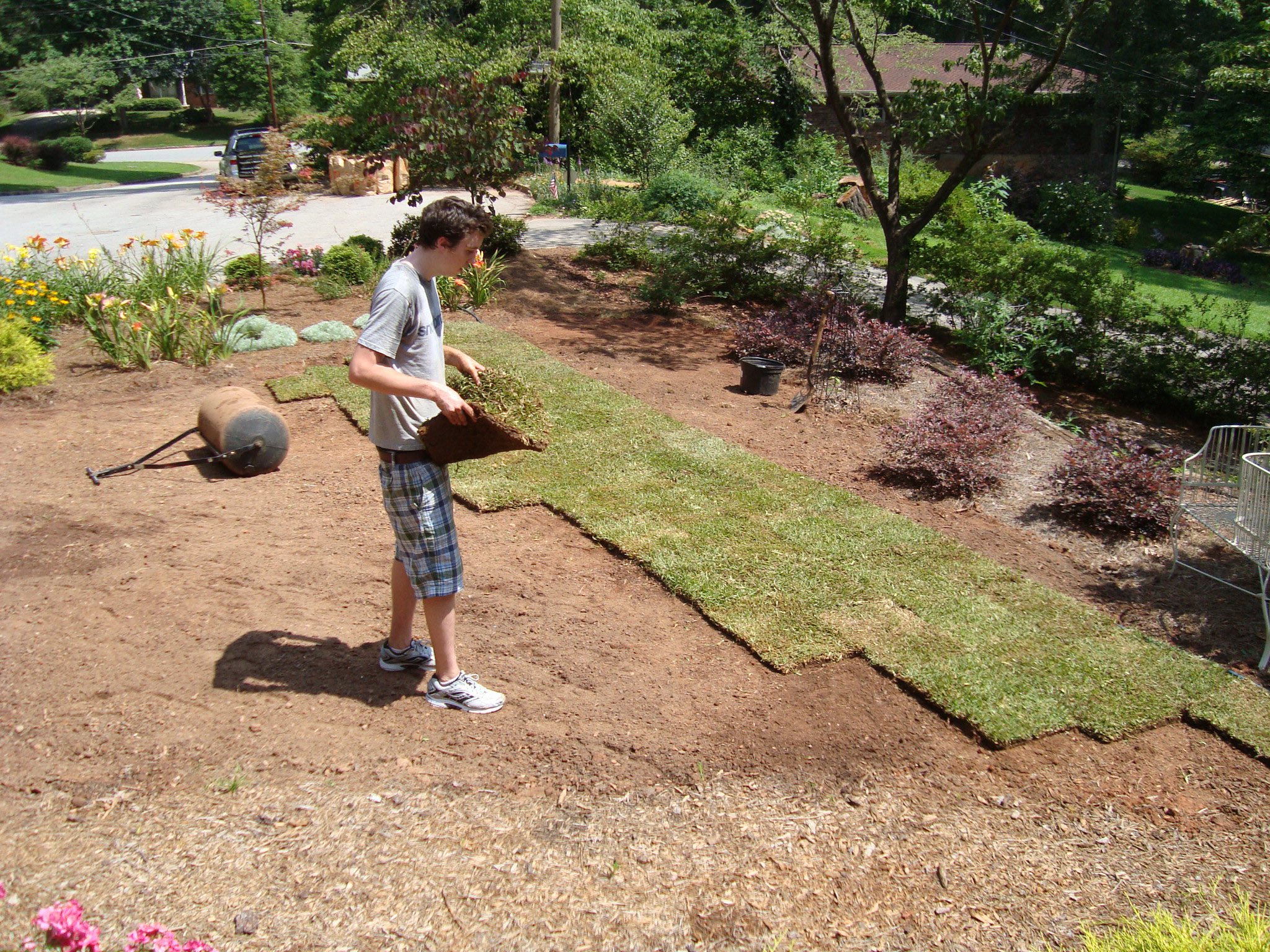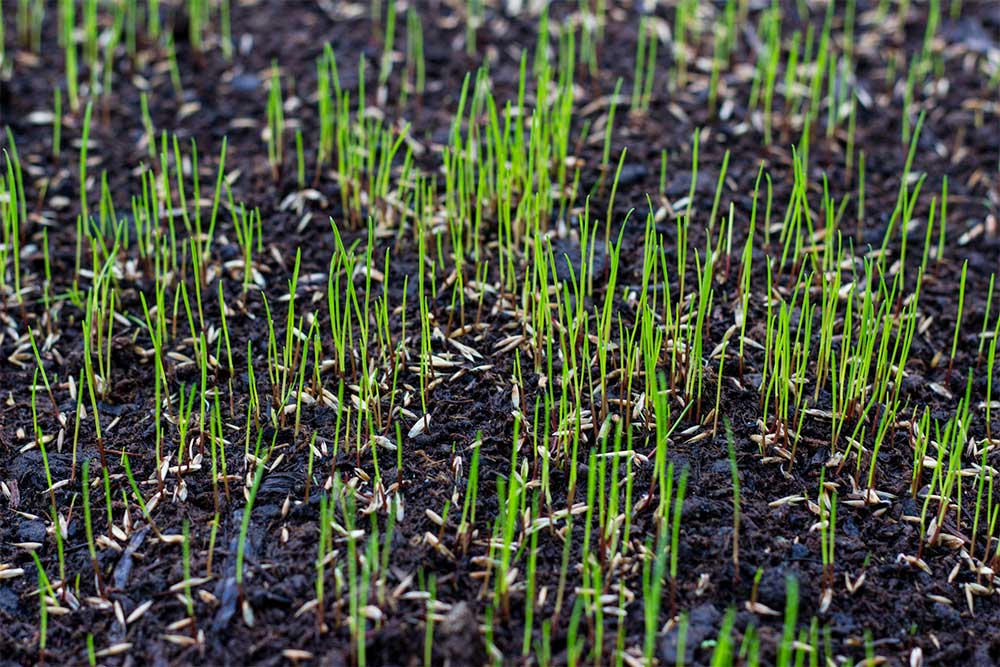Why Lawn Replanting is Essential for a Healthy Yard
Replanting a lawn can be a daunting task, but it’s a crucial step in maintaining a healthy and beautiful outdoor space. A well-manicured lawn can greatly enhance the aesthetic appeal of a property, but a worn-out or dying lawn can have the opposite effect. If your lawn is plagued by bare spots, weeds, or disease, it may be time to consider learning how to replant a lawn. By doing so, you can improve curb appeal, increase property value, and create a healthier environment. A lush, green lawn can also provide a peaceful oasis for relaxation and recreation. Moreover, a healthy lawn can help to purify the air, reduce noise pollution, and even mitigate the urban heat island effect. By understanding the importance of replanting a lawn, homeowners can take the first step towards creating a beautiful and sustainable outdoor space.
Preparing Your Lawn for Replanting: Tips and Tricks
Before learning how to replant a lawn, it’s essential to prepare the soil and remove any existing grass or debris. This step is crucial in ensuring a successful replanting process. Start by removing the old grass, either by digging it up or using a non-selective herbicide to kill the grass. Next, till the soil to a depth of 8-10 inches to loosen the soil and remove any debris. Adding organic matter such as compost or well-rotted manure can help improve soil structure and fertility. This will provide a nutrient-rich environment for your new grass to thrive. Additionally, remove any rocks, weeds, or other obstacles that may hinder the growth of your new lawn. By properly preparing your lawn, you’ll be well on your way to growing a lush, healthy lawn.
Choosing the Right Grass Type for Your Climate and Soil
When learning how to replant a lawn, selecting the right grass type is crucial for a successful outcome. With so many options available, it can be overwhelming to choose the best one for your specific climate, soil type, and level of maintenance. Cool-season grasses, such as Kentucky bluegrass and perennial ryegrass, thrive in cooler temperatures and are ideal for northern climates. Warm-season grasses, like Bermuda grass and zoysia grass, are better suited for southern climates and can tolerate high temperatures. Additionally, consider the level of maintenance you’re willing to commit to, as some grass types require more frequent mowing, watering, and fertilizing. By choosing the right grass type, you’ll be well on your way to growing a lush, healthy lawn that can withstand the elements and require minimal upkeep.
How to Properly Sow New Grass Seeds
When learning how to replant a lawn, proper seeding techniques are crucial for a successful outcome. To ensure optimal germination and growth, it’s essential to sow new grass seeds at the right rate and depth. Start by calculating the correct seeding rate for your specific grass type, taking into account factors such as climate, soil type, and intended use. Next, prepare the soil by loosening it to a depth of 8-10 inches and raking it smooth. Sow the seeds evenly, using a spreader or by hand, and rake them in to a depth of about 1/4 inch. Finally, water the soil gently but thoroughly, keeping it consistently moist during the germination period. By following these steps, you’ll be well on your way to growing a lush, healthy lawn that will thrive for years to come.
Lawn Care Essentials: Watering, Mowing, and Fertilizing
After learning how to replant a lawn, it’s essential to understand the crucial lawn care practices necessary for a healthy, thriving lawn. Proper watering, mowing, and fertilizing techniques are vital to maintaining a lush, green lawn. When it comes to watering, aim to provide about 1-2 inches of water per week, either through rainfall or irrigation. It’s also important to water deeply and infrequently to encourage deep root growth. Mowing is another critical aspect of lawn care, and it’s recommended to maintain a mowing height of 2.5-3 inches to promote healthy growth. Finally, fertilizing is essential for providing necessary nutrients to your lawn. A balanced fertilizer with a ratio of 10-10-10 (nitrogen-phosphorus-potassium) is a good starting point, and it’s recommended to fertilize at least twice a year. By following these lawn care essentials, you’ll be well on your way to growing a beautiful, healthy lawn that will thrive for years to come.
Common Lawn Replanting Mistakes to Avoid
When learning how to replant a lawn, it’s essential to be aware of common mistakes that can hinder the success of your lawn restoration project. One of the most critical mistakes to avoid is inadequate soil preparation, which can lead to poor drainage, nutrient deficiencies, and uneven growth. Insufficient watering is another common mistake, as it can cause newly sown seeds to dry out and fail to germinate. Improper mowing techniques, such as mowing too low or too frequently, can also damage your lawn and create an environment conducive to pest and disease issues. Additionally, failing to choose the right grass type for your climate and soil can lead to a lawn that is prone to disease, pests, and environmental stress. By being aware of these common mistakes, you can take steps to avoid them and ensure a successful lawn replanting project. Remember, proper planning and execution are key to achieving a lush, healthy lawn that will thrive for years to come.
Post-Replanting Care: Monitoring and Maintaining Your New Lawn
After learning how to replant a lawn, it’s crucial to monitor and maintain your newly replanted lawn to ensure its success. Regularly inspect your lawn for signs of pests, diseases, or nutrient deficiencies, and take action promptly to address any issues. Implement a regular maintenance schedule, including weekly mowing, watering, and fertilizing, to keep your lawn healthy and thriving. Additionally, consider implementing integrated pest management (IPM) strategies, such as introducing beneficial insects or using organic pest control methods, to minimize the use of chemical pesticides and maintain a balanced ecosystem. By staying vigilant and proactive, you can prevent common lawn problems and enjoy a lush, healthy lawn that will continue to thrive over time. Remember, proper post-replanting care is essential to achieving a beautiful, sustainable lawn that will enhance your outdoor space and increase your property value.
A Beautiful Lawn in No Time: Conclusion and Final Tips
By following the steps outlined in this guide, you’ll be well on your way to learning how to replant a lawn that is lush, healthy, and thriving. Remember, proper lawn replanting is a process that requires patience, dedication, and attention to detail. From preparing your lawn for replanting to monitoring and maintaining your new lawn, every step is crucial to achieving a beautiful outdoor space. By avoiding common mistakes and incorporating essential lawn care practices, you can create a stunning lawn that will enhance your property value, improve your curb appeal, and provide a healthy environment for you and your family to enjoy. So, don’t wait – start your lawn restoration journey today and reap the rewards of a beautiful, sustainable lawn for years to come!








